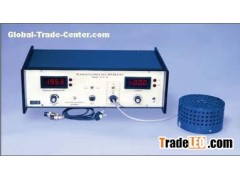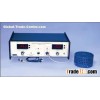We offer Study of Planck's Constant very useful for Physics and Material Science labs. Several proposals to measure the Planck’s Constant for didactic purposes, using the current – voltage (I-V) characteristics of a light emitting diode (LED) have been made quite regularly in the last few years. The physical interpretation however is not completely clear and this has raised many discussions, which have been published almost with same regularity as the proposals themselves.
The present experiment is based on diode current for V<V0, using the diode law.
l = l0 exp [-e(V0 – V)/ ηkT]
where, e is electronic charge, k is Boltzmann constant, T is absolute temperature and h is material constant which depends on the type of diode, the location of recombination region, etc.
The correct method to determine the real height of the potential energy barrier V0 is to directly measure the dependence of the current on temperature keeping the applied voltage V slightly below V0.
Compare with previous methods, this determination of V0 is more precise and more accurate and at the same time the physical interpretation is more transparent. The Planck’s constant is then obtained by the relation
h = e V0 λ/c
The set-up is a self contained unit. All the necessary facilities and measuring devices are built in a single unit, as a result only minimum of external connections need to be made.
[I] Dependence of current (I) on temperature (T) at constant applied voltage (V)
The following facilities are built in for this
Current Meter
- A highly stable current source with 3½ digit display.
- Range: 0-2mA with resolution of 1mA
Oven, PCO-01
- It is a small temperature controlled oven with built-in RTD sensor.
- Temperature adjustable from ambient to 338K
- Digital display of temperature
- High stability 1K
Variable Voltage Source (0-2V)
- A high stability voltage source with 3½ digit display.
[II] Material Constant η
To draw I-V characteristics of LED for determination of η, a variable voltage source and a current meter are provided with 3½ digit display.
[III] The wavelength λ of light emitted by LED
These are taken from LED datasheet or measured by a transmission grating, and are provided with the set of LED’s.
The experiment is complete in all respect.
Study of Planck's Constant







